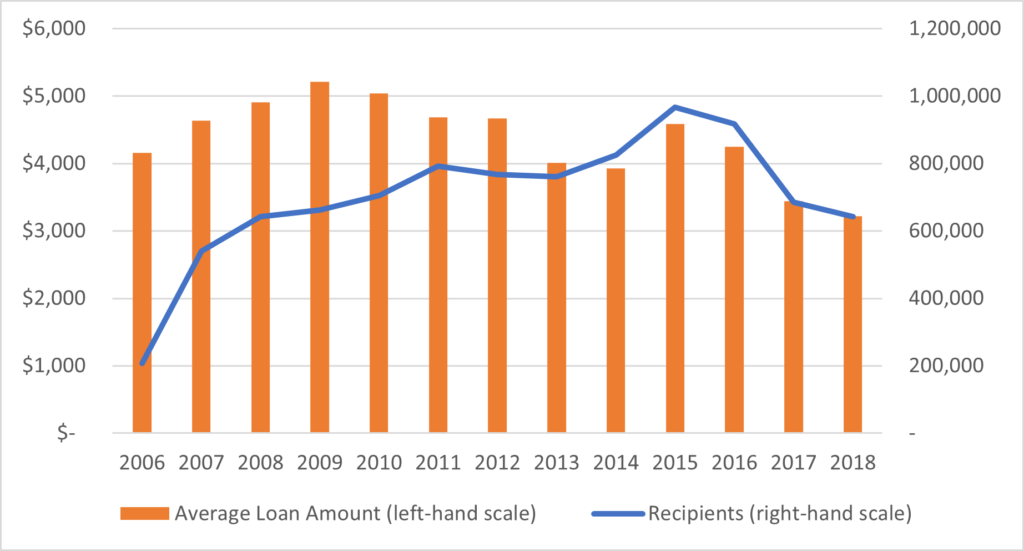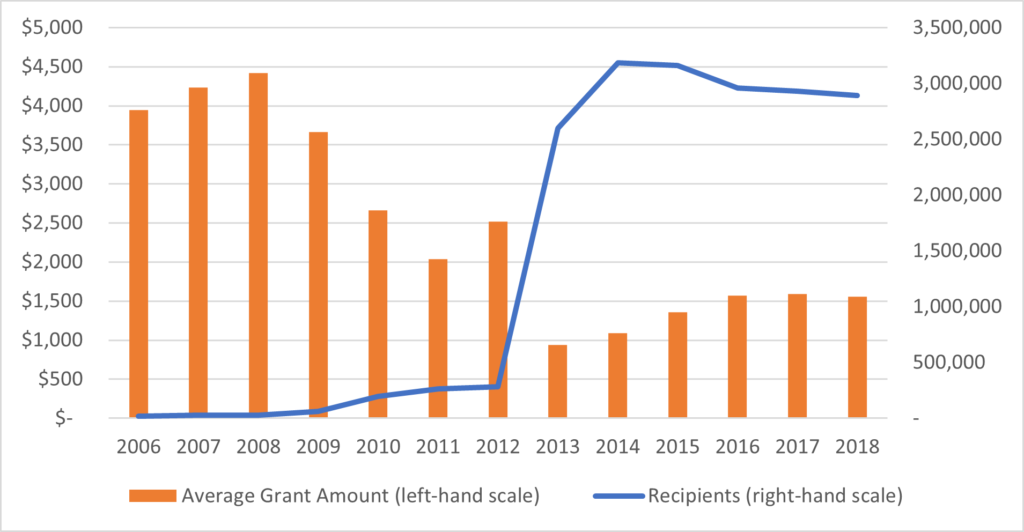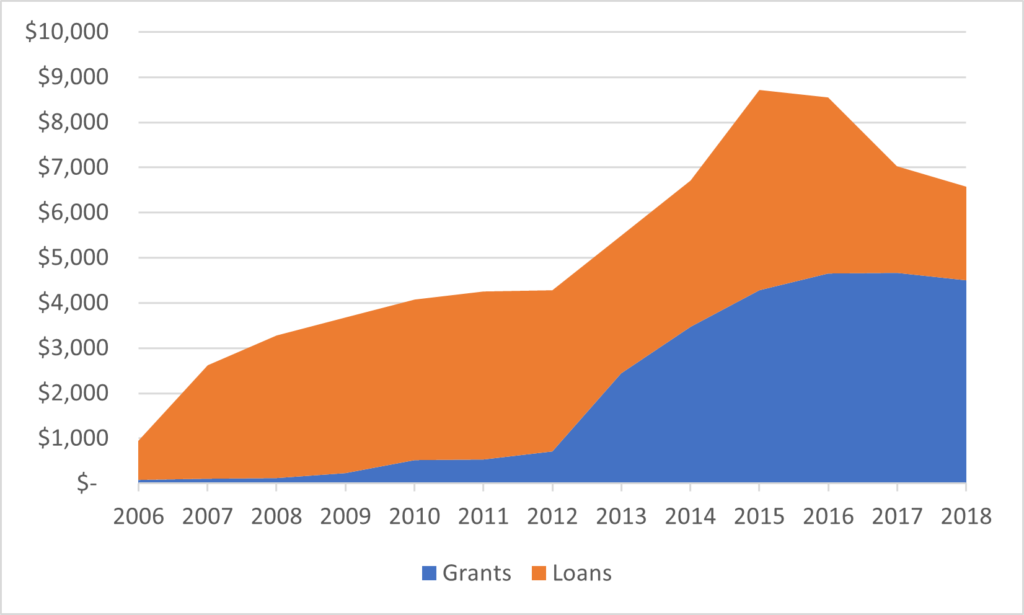Last week, we did a piece on Canadian student financial assistance over the years. Today, I want to jump across the Pacific to South Korea, because that country’s student aid system undergone some incredible policy shifts over the past 15 years. I truly think South Korean student aid policy might be one of the biggest stories in higher education finance anywhere in the world in the past decade, and it has, hitherto gone completely unnoticed by most in the rest of the world. So today I am here to fix this.
(And yes, this data comes from HESA’s forthcoming, massive, fabulous World Higher Education: Institutions, Students and Finances, written by Jonathan Williams and myself, coming out on February 23rd. Watch for it.)
Back in the mid-00s, South Korea had what could accurately be called a vestigial student aid system. The central government gave out roughly 200,000 loans per year and a mere 20,000 grants. They weren’t small individually – roughly $4,000 each, on average – but for a student body of 3.5 million students or so, their coverage was massively inadequate. So, they changed it.
The first big push was on loans. While holding the value roughly constant, the conditions for obtaining loans were loosened, and the number of recipients began to rise quickly, to a high of almost 1 million – a fivefold increase – in 2015 before falling back to about 650,00 in recent years (note: I haven’t been able to find a trigger for this reduction, but it seems likelier that government pulled back on loan eligibility in light of reports on graduate indebtedness than it was about youth unwillingness to borrow.
Figure 1 shows the change both in the number and the value of loans in South Korea since 2006.
Figure 1: Total Loan Recipients and Average Loan Amounts (in constant $2018 USD at PPP), South Korea, 2006-2018

Then there were grants. In the late oughts, the government began increasing the number of allotted grants, but the real change came during a set of dramatic student protests in 2011-12 that demanded a halving of tuition fees. That didn’t happen – the government reduced fees by about 5% – but what the government did instead was massively increase expenditures on grants. And by massive, I really mean massive: in the space of 2 years, the percentage of students receiving grants jumped from about 10% to about 85%. And while the average size of grants declined, total expenditures on grants increased by about tenfold between 2010 and 2018.
Figure 2: Total Grant Recipients and Average Grant Amounts (in constant $2018 USD at PPP), South Korea, 2006-2018

Putting these facts together, from 2006 to 2015 total student financial aid disbursements ballooned from about a billion dollars a year to almost nine billion dollars a year, while shifting from a loan:grant ratio of 10:1 to 1:1.
Figure 3: Total Student Financial Aid Disbursement by Type, (in millions of constant $2018 USD at PPP), South Korea, 2006-2018

There has literally never been anything like this anywhere else in the world. That it managed to pass largely unnoticed is partially a reflection of the rest of the world not paying much attention to Korea, and partly a deep indifference of Korean policymakers to being understood by anyone outside the country. But it’s a good reminder that some of the most interesting experiments in student aid are happening way, way, way off the radar of folks who tend to focus on Europe and North America.

 Tweet this post
Tweet this post
